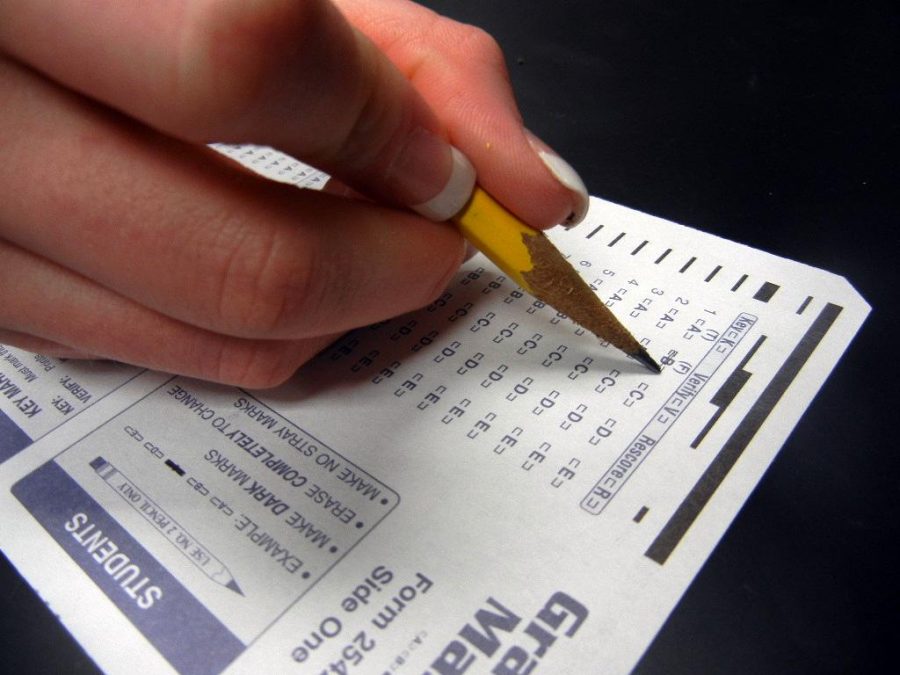By Jaclyn Weiner
The Obama administration has called for a decrease in the amount of standardized test taking in schools around the country. It is long overdue for this topic to be addressed in a serious manner. The administration has admitted that supporting certain policies, such as the No Child Left Behind Act and Race to the Top program, has had unforeseen consequences that have contributed to the problem of over-testing, especially in elementary and secondary education. The Obama administration is now trying to counteract the already-concerning issue to which it inadvertently contributed.
“I still have no question that we need to check at least once a year to make sure our kids are on track or identify areas where they need support,” said Arne Duncan, the secretary of education, in a statement. “But I can’t tell you how many conversations I’m in with educators who are understandably stressed and concerned about an overemphasis on testing in some places and how much time testing and test prep are taking from instruction.”
A survey from the Council of the Great City Schools, an organization of the nation’s largest urban public school systems, found that about 112 mandatory standardized tests, on average, are taken by students attending the nation’s big city schools between pre-kindergarten and high school graduation. Students are tested most aggressively in eighth grade.
The survey showed that 2.3 percent of school hours were taken up by standardized testing, which is about 20 to 25 hours per year. The Obama administration supports a limit of no more than two percent of class time being taken up by standardized tests.
The Assessment of Educational Progress, the largest continuing and nationally representative assessment of what American students know and how they perform in core subjects, has also found that there is no evidence of standardized testing improving academic performance.
Supporting evidence has contributed to the Obama administration’s support of the reduction of standardized testing, but they are in no way advocates of getting rid of standardized testing all together. The Obama administration acknowledges that testing plays an important role in education, especially when determining what subjects are troublesome for students.
“Today, as a parent, I want to know how my child is doing in school, and I want my teacher to know that, too,” President Obama states. “As president, I want to hold all of us accountable for making sure every child, everywhere, is learning what he or she needs to be successful. That’s why I believe that in moderation, smart, strategic tests can help us measure our kids’ progress in school, can help them learn.”
Although the support of the over-testing in schools is important and well-intended, it comes into question how much of an impact the Obama administration will truly have. Many state and school districts mandate standardized testing, not the federal government. Additionally, though the issue of the amount of standardized testing is an important matter, the Obama administration may have missed the mark. The more prevalent issue is the detrimental effects of high-stakes testing.
The Obama administration’s support of the decrease of standardized tests is mostly on low-stakes testing. A low-stake test is an exam that concentrates on determining in which academic areas students are excelling, and which areas students could use more help. These tests also aim to improve academic instruction and identify students with learning disabilities.
High-stake testing has much more far-reaching and severe consequences to students, teachers, schools and districts alike. Students who receive poor scores on high-stakes tests can be held back a grade or not be allowed to graduate. There are many reasons that students may perform poorly on exams, and many of them have nothing to do with the overall competence of the students. The American Test Anxiety Association found that 16 to 20 percent of students suffer from test anxiety, which can severely affect the outcome of exam scores. Others are simply poor test-takers, which makes it difficult to determine whether or not students grasp the material presented.
Poorly-funded schools also tend to have lower test scores. Without the proper resources, it is difficult for students to achieve academically. Other students whose first language is not English are also at a great disadvantage. The effects of high-stake testing have also been shown to result in more students dropping out of school due to being held back, feelings of lack of self-worth or the stunting of academic achievement.
High-stakes testing is often used to evaluate teachers. The tests may be used to determine whether or not a teacher’s methods are effective or not. This has, in many cases, affected hiring, firing and tenure of teachers.
Test scores also majorly affect schools and districts. No matter the cause of low scoring, consequences can be major. Public rating of schools may go down, staff members are often removed, school administrators can be fired and schools have even been shut down due to poor high-stake test scores.
The Obama administration is trying to take steps in the right direction when it comes to the issues surrounding the overabundance of standardized tests, but more important issues are being overlooked. The problems that result from standardized testing goes further than over-testing. High-stake tests and their negative effects need to be added to the conversation in order solutions to be found.
Jaclyn Weiner, FCRH ’18, is a communications and media studies major from Wantagh, New York.









































































































































































































